DOG TRAINING OFFERED IN-PERSON AND ONLINEOur dog training services are delivered in almost any format that meets your needs. We have GROUP CLASSES at our indoor and outdoor facilities on our farm, ONLINE LIVE STREAMING classes, and SELF-PACED VIDEO-BASED training through our Online Dog Training Course. Our PRIVATE TRAININGS can be done in-home, outside, in public dog-friendly locations, at our facility on our farm, online via phone or video conferencing and through email. |
If you have read about puppy development stages online or in books, you most likely have heard of a fear period that puppies can experience between 8 and 11 weeks of age. I cover it in my book, Juvenile Delinquent Dogs: The Complete Guide to Saving Your Sanity and Successfully Living with Your Adolescent Dog , published in 2012. Some puppies will experience it. Others don’t seem to. However, it occurs often enough that it is a well-accepted stage of development.
What is less well-documented or understood, is the possibility of a second fear period for dogs some time during adolescence. Since there is a much wider time frame during which this could occur, it’s much more difficult to pin down and define. Some believe it coincides with a growth spurt during adolescence.
I have spoken about it with several of my clients. In one case, the clients had taken their puppy through my Puppy Preschool Class and everything went well. A few months later, they called me. Their now-adolescent dog, who had been friendly with everyone, was suddenly afraid of unfamiliar people. What could they do?
First, we discussed whether it was possible the dog had a traumatic experience recently with a stranger. This was one possible explanation. Even if it were something we would not consider traumatic, it could have been to the dog. They assured me that nothing scary had happened recently with a stranger.
Since the age seemed to fit, I suggested that most likely the dog was experiencing a second fear period. Things that were once no cause for concern – in this case, unfamiliar people – suddenly were frightening for the dog. For other dogs, this could manifest in a fear of other dogs, objects (such as trash cans on the sidewalk on trash collection day), or other things. The dog might have been somewhat cautious, completely oblivious, or even friendly toward the object of concern before, but suddenly the dog is now very cautious or even frightened of it.
For this particular family, I suggested they sign up for my next Juvenile Delinquents Class where we could work on building more confidence and learn that the strangers (others in class) were nothing to be afraid of. We could also have done a few private training sessions as well, but the group class worked well for this dog and over a period of a few weeks, the dog was doing much better.
If your adolescent dog is going through a fear period, don’t dismiss the fear. Don’t scold or punish your dog. Don’t force your dog to “get over it” by flooding him/her with whatever is causing concern. Instead, be patient and help your dog to build confidence and overcome his/her concerns at whatever pace is comfortable.
Our goal is to positively impact the lives of as many dogs and their families as we can, in part through our extensive library of video, infographics and text articles. |

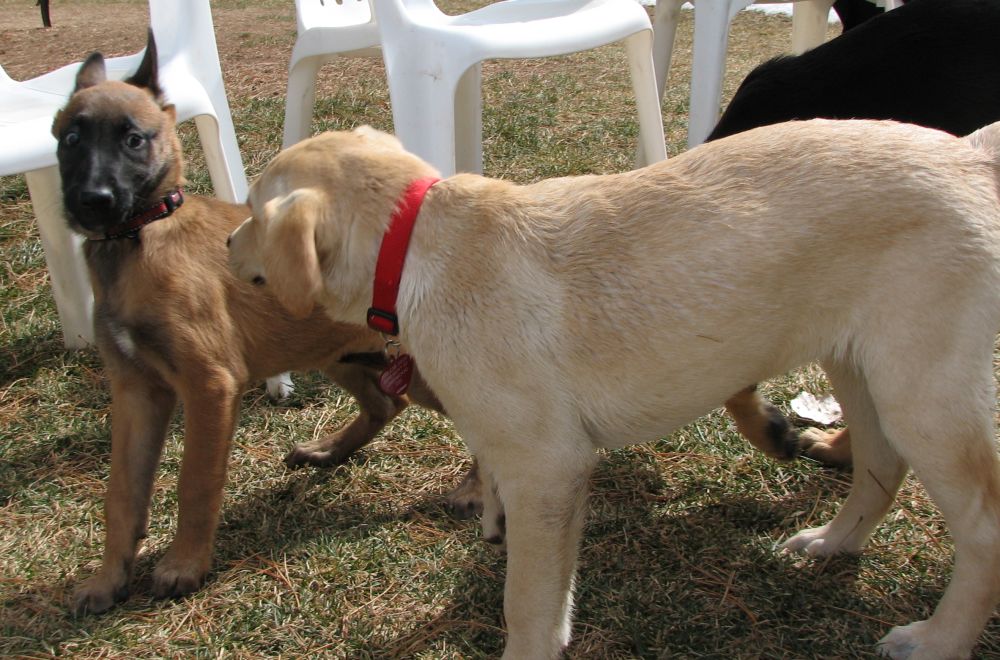

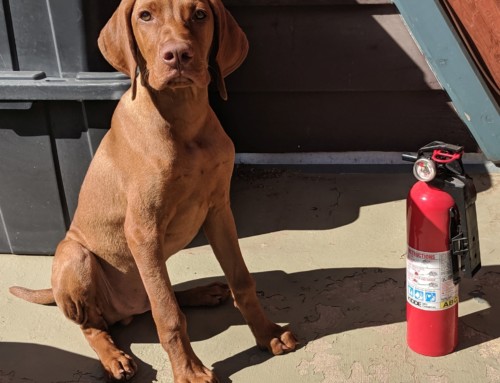
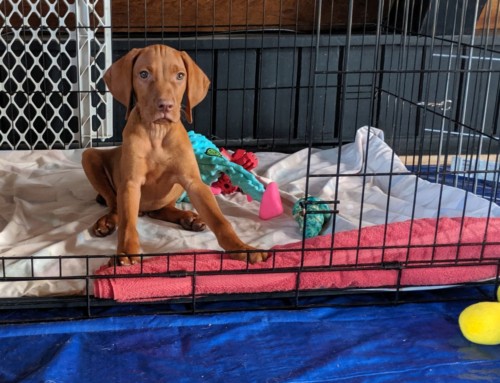
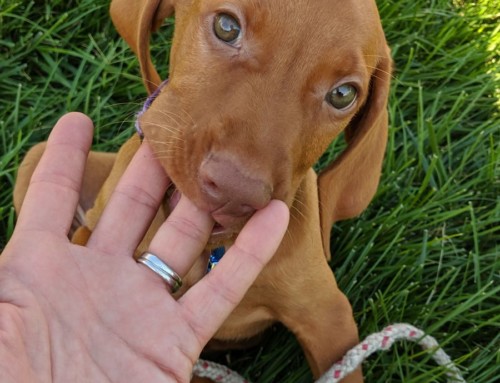
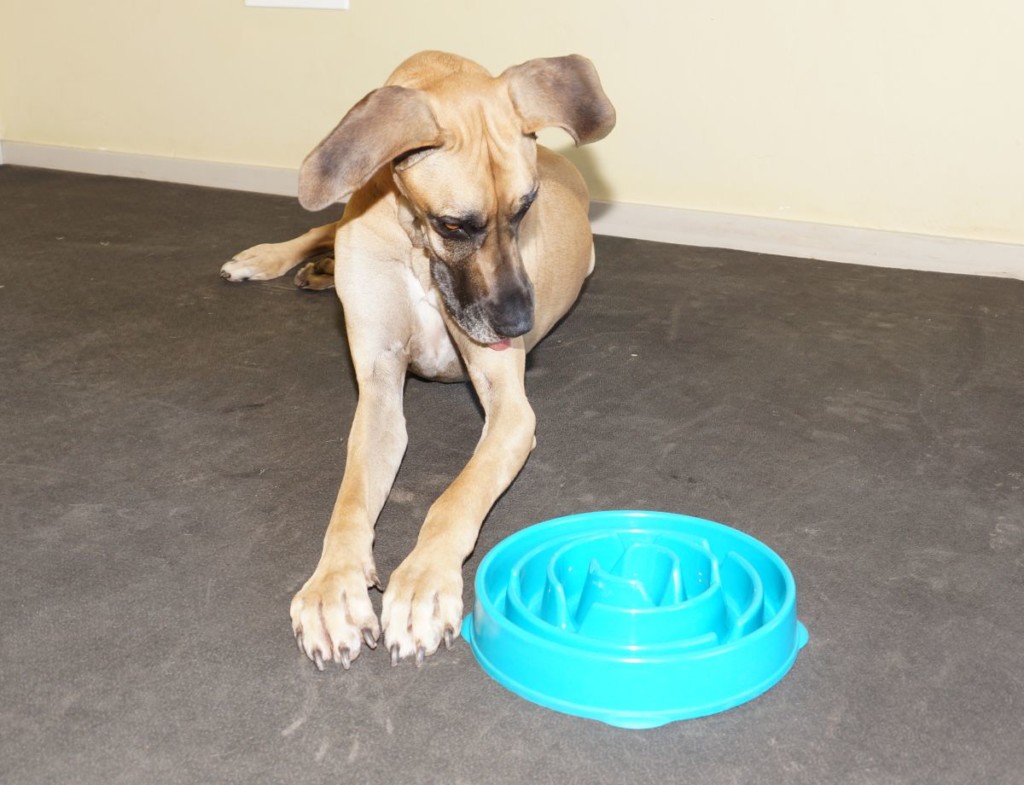
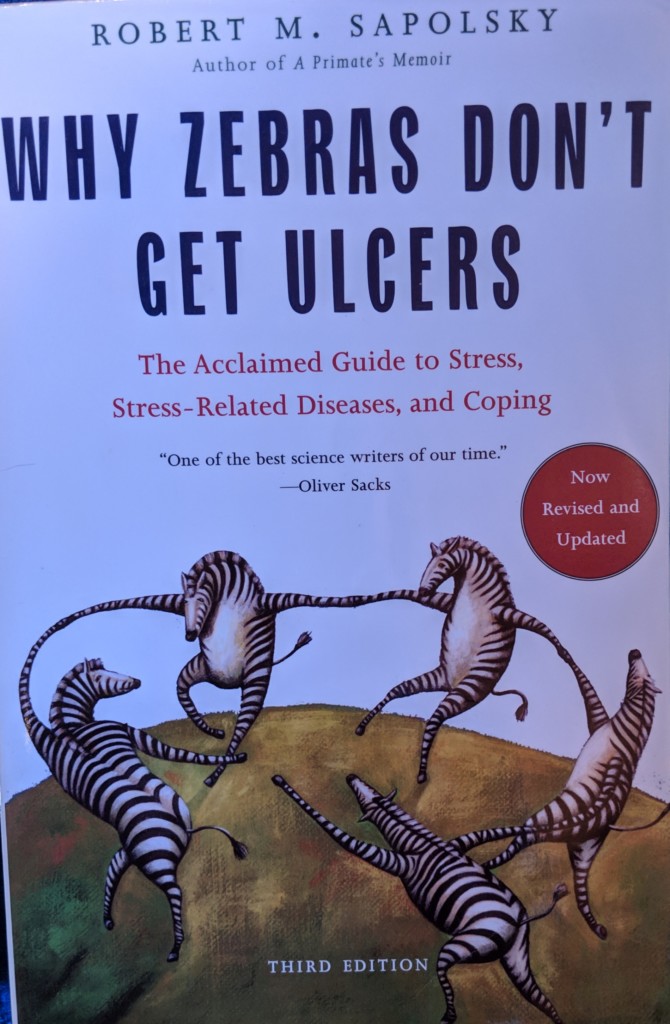
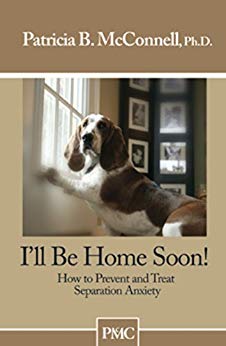
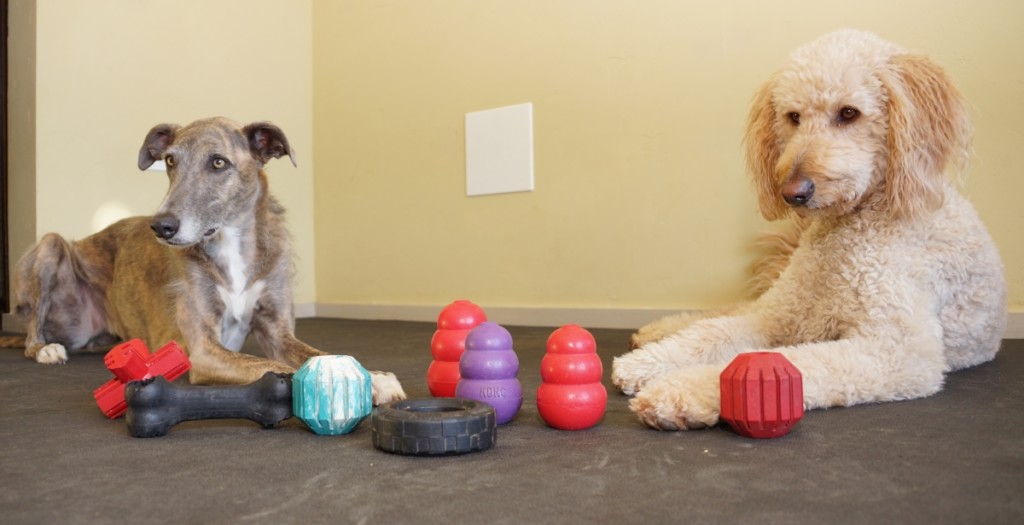
Hi Sue-My dachshund-chihuahua mix has always been somewhat skittish but would happily go for walks around the neighborhood-but for the past couple months he acts like he is really spooked by somethingin the neighborhood and sometimes can’t even get him out of the driveway. Once in awhile he will go. He never used to be like this.
He will walk in the park, with no problem but not in our neighborhood. He has always been somewhat frightened of other dogs barking at him but he would still walk. No more. How can I figure out what is spooking him? Thanks for your help.
Hi Barbara, that’s so sad that your dog does not like to walk in the neighborhood any longer! Sometimes it is hard to determine what spooked a dog. Can you remember when it first occurred? Perhaps try taking a walk without him and really pay attention to when/where you saw him acting spooked – do you notice anything that has changed in your neighborhood? Did it happen on trash day with the trucks driving around? Was there a storm? New dog in the neighborhood? It might even be a sound that you can’t hear but he can. Sometimes it takes some sleuthing to figure it out and sometimes we just can’t tell what it is. Take a friend along and see if they can help come up with some ideas. Good luck!
I adopted a corgi-dachshund almost a year ago (late December 2017); I am not certain of his age but I’m assuming he’s around 2.5 years by now. We quickly found a rhythm of taking a long walk in the mornings and evenings. He’s also always gotten a lunchtime walk with a dog walker and done well with that. Almost a month ago, he started turning around on walks and leading me back home (mornings and evenings, he’s still walking well with our Rover guy in the middle of the day). Then he started refusing to even walk down the block (we were walking at least a mile both times) and would only go in the backyard. Now he shakes when we try to do anything outside of the backyard but is STILL fine with the Rover guy. We’re working with a trainer on slooooow desensitization to his harness, the leash, etc., but it seems like he’s so not interested. I miss walking him and this is also impacting my mental health. While he still loves the dog park and playing in nature, the refusal to walk with me is so confusing and stressful. I’m trying to remember that it likely has nothing to do with ME, but more that something has spooked him and I have no idea what. Any advice or ideas welcome…I hate this feeling like I’m a bad dog mom…
Hi Claire, that is sad! One of the reasons we love having dogs is to have a companion to enjoy walks with! So I have a couple of ideas for you. First, can you remember anything that spooked him when this started? Or was there something on that particular walk when it first started that might have frightened him? For example, some dogs are afraid of fireworks/thunder/gunfire and if they hear it even way way off in the distance, will spook at hightail it back home. For some dogs, that can transfer to a fear of going out. I had a client years ago who was out walking her dog when there was a shooting in their neighborhood and from that day on, the dog would walk with anyone else (even with mom if someone else was with them) but not alone with mom. That dog associated mom with the traumatic event. If that’s the case, can you walk him elsewhere outside of the neighborhood? Have you tried driving somewhere else? Will he walk with you at a park or trail or a different neighborhood? For some dogs, changing the picture/setting will make all the difference. The other thing I would consider is a thorough vet check and make sure there are not some type of medical/pain issues going on. Even though everything else might seem normal, that does not mean there couldn’t be something going on. I once had a client whose dog was biting visitors. There were no other signs of a problem so we assumed it was a behavior issue. However, we still had a vet check and turned out the dog had several bad teeth that needed to be pulled. It seemed odd that the only sign of a problem was biting visitors, right? But when the bad teeth were pulled, there were no more issues with visitors! So a good health check might not be a bad idea. I have some other ideas too, but these would be a good place to start. Good luck!
Hi Sue,
Thank you for such a thorough reply! Unfortunately we’ve tried most of these things and they’re a no-go. I have found that sometimes he’ll walk if there’s another dog and owner on the walk with us to interact with, so I may try doing that more often (but that takes planning and can’t be our long term solution, as much as I would like it to be!). Otherwise…we’re at square one with desensitization training. Fingers crossed!
Hi Claire, sorry to hear that! Remember, walking with someone else would not be meant as a long term solution but rather a chance to get your dog into a new habit and then fade out the other dog companion. But if it’s working and you can do it regularly for a while, it might help him get past whatever is blocking him from being able to walk with just you. The other thing to consider, which some folks are opposed to and others are open to, is if this is really a major stressor for your dog – talk to your vet about anti-anxiety medication. While I don’t go to that as a first choice, if we’ve tried lots of other things are are not making progress (or the desensitization is so painfully slow) then some dogs truly do need some meds to help get their brain into a place where they actually can learn and make progress. I have had some clients who we just cannot make any headway with until we get them on a good medication that help them move past whatever traumatic event caused the problem to start. Give it some thought, and good luck!
This morning she danced me into the kitchen and as soon as I opened the cabinet for the bowls, she dropped down and starting slinking out. I found her in her crate so I brought the food in there and she would not eat it. I changed the bowl and she would not even smell it. She was shaking. So I left the food and got in the shower and she never touched it. I waited her out and she wanted nothing to do with it. I tried another brand of dog food and nothing would get her out of her state. Then she moved to another room and I tried some chicken to make sure the issue was not her tummy. She did eat the chicken. She seems to be freaked out by anything out of that cabinet. I even offered her a walk and got no response which usually illicits a huge response.
Hi Vicki, well looks like you’ve determined it has something to do with that cabinet. Can you move treats/food or whatever you pull out of there for her to another cabinet and see if that helps? I would consider staying away from that cabinet at all when she is near if you can to give her a break and take the pressure off her. I would also really consider getting some professional help with this one if you don’t see things turning around anytime soon. Poor girl!
Yesterday I put a little chicken on her food and she ate while in her crate. This morning she ran to her crate instead of the kitchen and I went with our other dog to the kitchen and I put a little less chicken and I I coaxed her half way and she ate in the hallway. So the chicken on her dog food for her eating again. She still won’t take anything from my hand not even chicken. But if I put it down she will eat. So I will have to take it a day at a time for a little while.
Sounds like you are slowly seeing some progress, that’s great! Just keep taking it slow!
Every morning my dogs dance me into the kitchen and I give them a treat. One day the treat fell out of my hand and the smaller min pin got it and ate it and I said hey now and drop it! She started to slink out of the kitchen and since that day she will not take a treat from me. She starts shaking and slinks out of the room. I have tried positive reinforcement to make it a happy occasion but she still seems terrified. I don’t know what to do. She is eating her regular meals at mealtime and does not act ill. It is breaking my heart.
Hi Vicki, oh, how sad! She sounds like a very sensitive soul. I was just talking to a client of mine the other day, and she had accidentally knocked over a chair in the kitchen which made a loud clatter. Her poor dog was afraid to enter the kitchen for an entire month after that! But her dog is fine now, it just took quite a while to overcome that fear from that one event. Will your dog enter the kitchen? Will she take a treat from you in a different room? What is the specific trigger – see if you can really narrow it down. Is it the kitchen? Is it you? Is it a treat in your hand? Really try to be specific so we can break it down and work to overcome it. Sometimes the trick is finding a place to start. Re-creating the scenario that scared her will just further scare her, but see if you can find a starting point. In another room, someone else giving the treat, giving the treat to your other dog and letting her see nothing bad happens. Take the pressure off her and find other ways to connect and rebuild that trust and avoid the exact scenario for now. Hope that helps, but consider hiring a pro if you need help breaking it down. It would be money well spent to help build back that trust and help find her joy again!
Your comments to others have been so insightful. I was hoping you might be able to help me understand what’s happening with our first ever family dog. We have a 7 1/2 month old male Golden doodle — Cooper. He is the sweetest puppy and so gentle. In the past month, he has gone from cheerful to fearful. He is scared of everything from our kids petting him to the throw pillows on the couch. He was so scared of a bag sitting on our bedroom floor that he literally jumped and ran from it when he saw it. He won’t let me comfort him when he’s scared of something. I tried to show him the objects and introduce him to them, but he acts like he’s scared of me if I do that. How can I help him through this. It’s not occasionally. He pretty much seems continuously frightened by his surroundings. Thank you for any help.
Hi Erin, Poor Cooper! It sounds like he might be going through an adolescent fear period. It’s not unusual for a dog during adolescence sometime to have a fear period where something they previously were perfectly ok with are now afraid of. But often it will be one thing – other dogs, strangers, new objects, etc. This case sounds a bit extreme though. First thing you might want to do is go in for a vet check just to make sure he is actually feeling well otherwise. If everything checks out, then I would work on keeping things very low key for right now. Try not to throw anything new at him and let him relax as much as you can. Then, when something does scare him. . . Don’t bring it to him, don’t force him to go to it. Have some REALLY tasty soft small treats and if he looks at the thing that scares him, give him a treat. If he takes a step toward it, give him a treat. Start creating some positive associations with the things that scare him but do not force anything. Reward his CHOICE to interact or notice it but let him decide. Sometimes our efforts to help them overcome the fear really just makes it worse – we have to back things up a bit and give him some more choice in the matter. Hope that makes sense!
I have an 11 year old Chihuahua , Female spayed and all of a sudden she has started getting afraid. And not all the time she is fine in the morning but then when it becomes 2 or 3 o’clock in the afternoon she starts to become scared of something in the house and wants to go outside but we can’t figure out what it is there’s no unusual noises nothing traumatic has happened we are at a loss what do you think it to be?
Hi Michelle, so sorry to hear about your Chihuahua. My first guess would be that either she is hearing something you are not or there was something that happened once that she associates with that time and is now afraid of it recurring. Do you notice any particular room or object she focuses on getting away from? Can you think of anything that happened around the time it started? Even something you think of as a non-issue that might have seemed traumatic to her? How long does it last? When does she want to come back inside? Is she fine then once she comes back in, or is she still on edge? Try putting on your “detective hat” and see if you can figure out what might be troubling her. If it’s always at a specific time, that leads me to believe something either is happening at that time or did happen at that time that really upset her. Sometimes it is a challenge to figure out what that is. Is there anything you can entice her with to stay inside or is she in a panic to get out? If you can find something valuable enough to overcome the fear, you could try creating a positive association with that time. But if she’s in a panic, she might not be able to accept anything else yet during that time. Good luck!
My miniature poodle (Syrah) was always friendly with my best friend until one day we went to his house and Syrah stood at the door or hide the whole time, she was very afraid. Now when my best friend come to my house, Syrah starts shaking and she is horrified. She goes to hide in corners, closets…. owwww it breaks my heart. I asked my friend if he stepped on her accidentally or his cane fell on her, nothing he says. Any explanation why she is acting like that? She was so friendly with him…….
Hi Mayra, I am sorry to hear that your poodle is now afraid of your best friend. That is difficult! How old is your poodle? If she is an adolescent dog, it is possible this could be a fear period but we do need to make sure we are helping her work through it so it does not become a long term or permanent problem. If she is older (adult or senior), then it’s unlikely to be a temporary fear period and more likely something else is going on. Sometimes there is a traumatic event from the dog’s perspective that we would not think of as traumatic. You had asked if he accidentally stepped on her – it is possible that it was something that happened that he did not do but that she associated with him. For example, let’s say your dog is sensitive to loud noises and a garbage truck backfires and scares her. But if she was focused on your friend at the time it happened, she might associate him with the event even though he had nothing to do with it.
Where are you located? I would suggest a couple of things: (1) you might want to get a thorough vet check just to make sure there are not any potential medical/physiological problems contributing (any pain issues she might have inadvertently associated with your friend, hearing or vision loss, etc.); (2) find a certified professional behavior consultant to help you start working through this issue with your friend so we can start creating positive associations with him again. I recommend starting with the IAABC and see if there is someone near you who can help: https://iaabc.org/consultants
Any idea why my 18mo old dog is suddenly unwilling to take treats from me & my wife? She is DEFINITELY food motivated and now she runs away from us when we have a treat for me. There’s nothing we can think of that we’ve done to promote this – only thing we can think of is that we’ve given her treats to go outside to potty and she isn’t fond of going out at night especially when it’s raining. But even that she eventually does.
Mattson, it sounds like she might have somehow created a negative association with taking food from your hand. I might see this if a dog was lured with a treat into doing something she really does not like or is afraid of. I might also see this if something completely unrelated coincidentally happened at the same time you were giving her a treat – a truck backfired outside, for example. Can you think of any situations that might have scared her at the same time she was being given a treat? If not, then look at it from another perspective: does it matter what location you are in? Kitchen vs the back yard, for example? Does it matter if you are sitting or standing? Does it matter if it’s in the morning or evening? Again, there might be some association she is making that is not obvious yet to us. You mentioned a possible association with going out to potty. It’s possible that could be contributing – in that case, avoid giving treats in that situation and location for now. See if she will take treats in completely unrelated scenarios and locations for now.